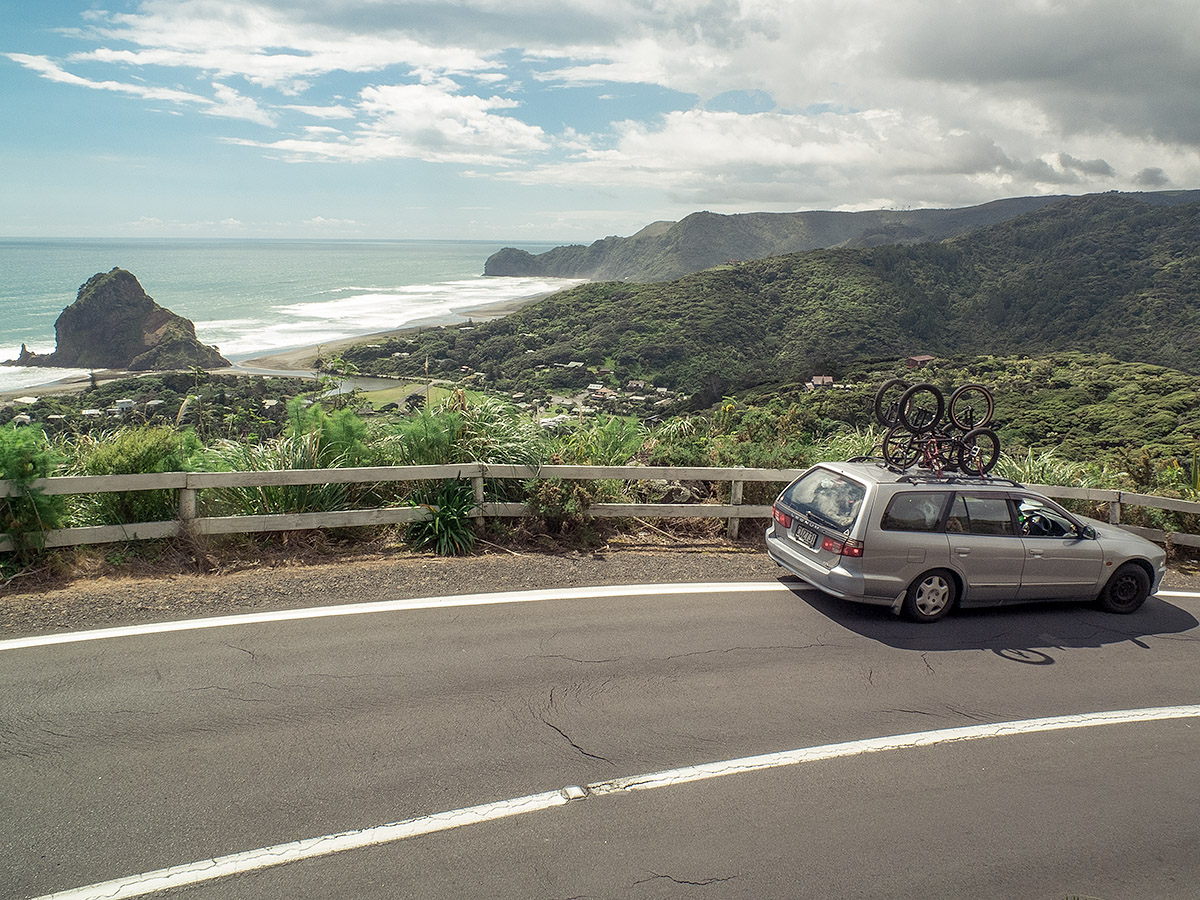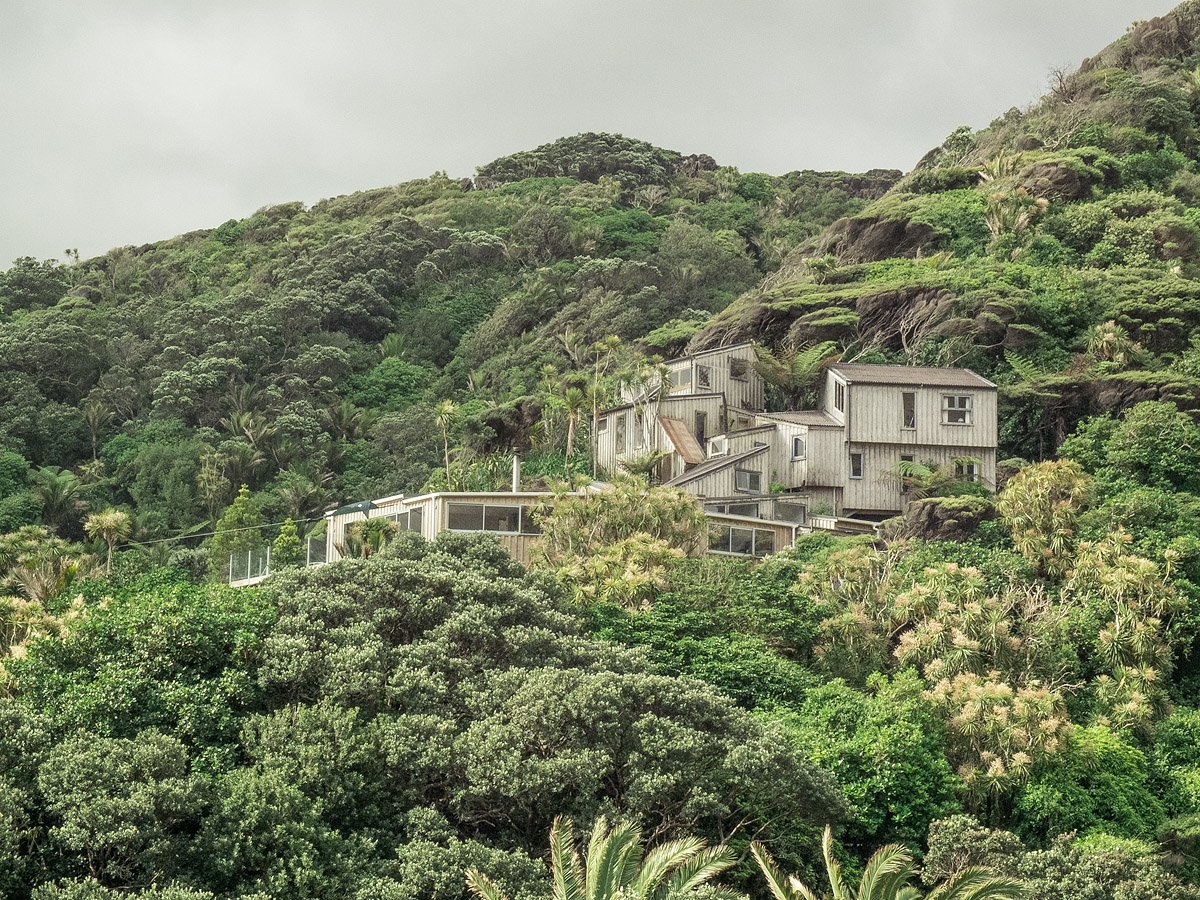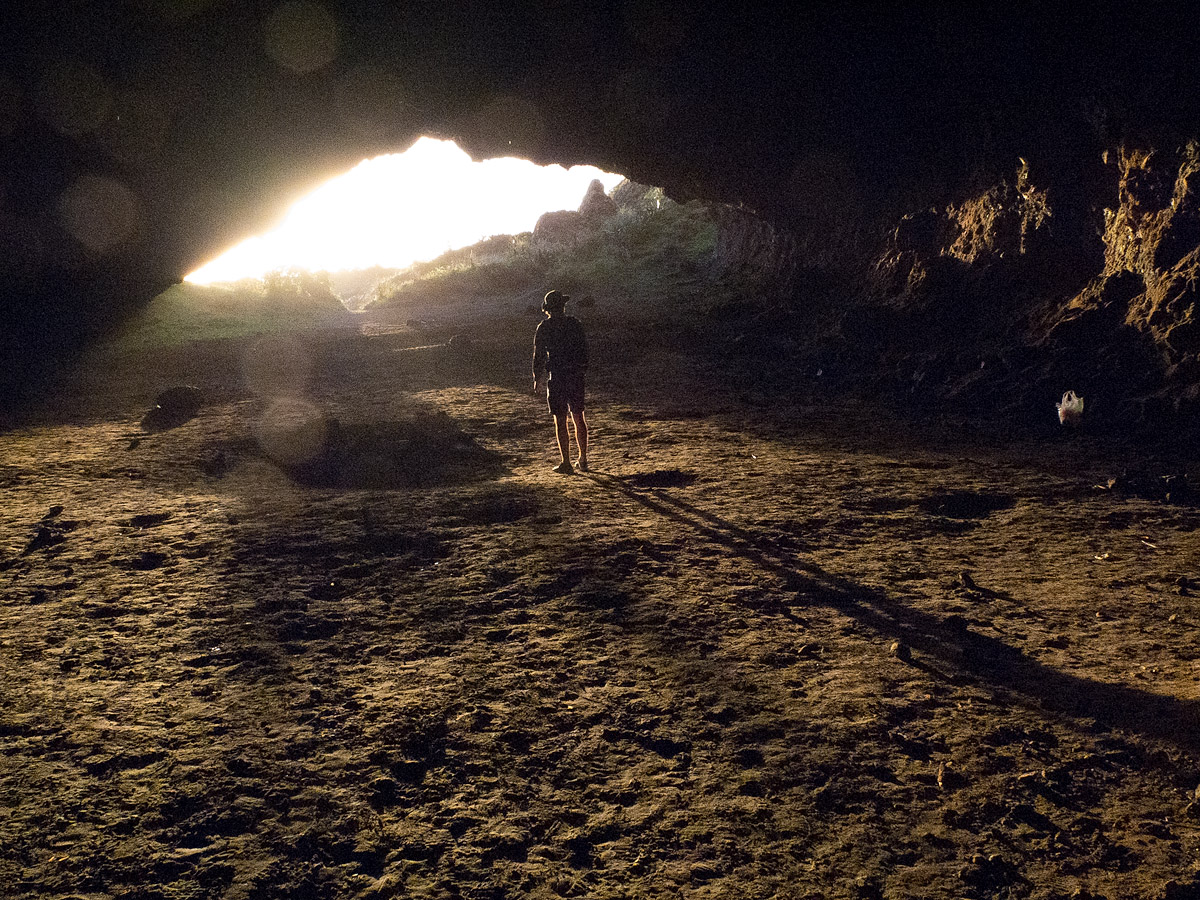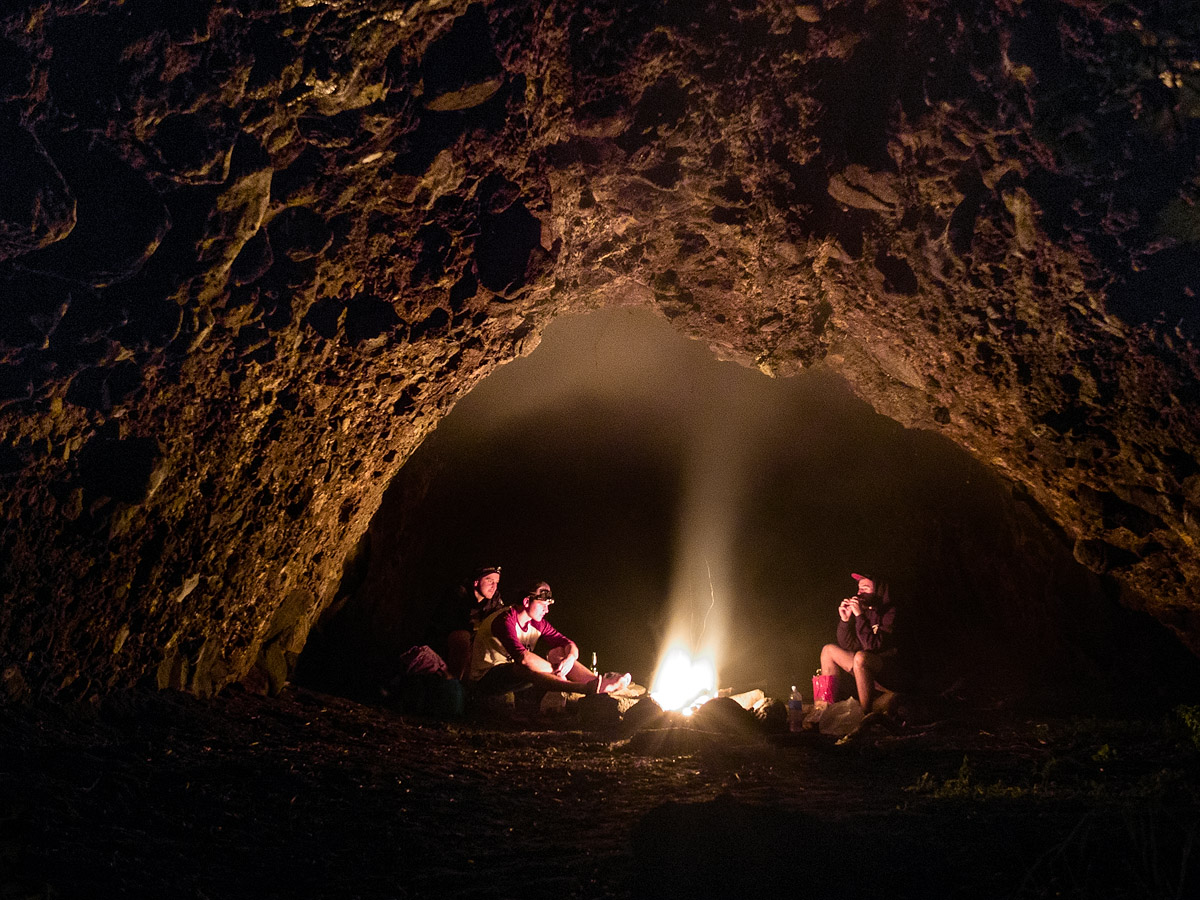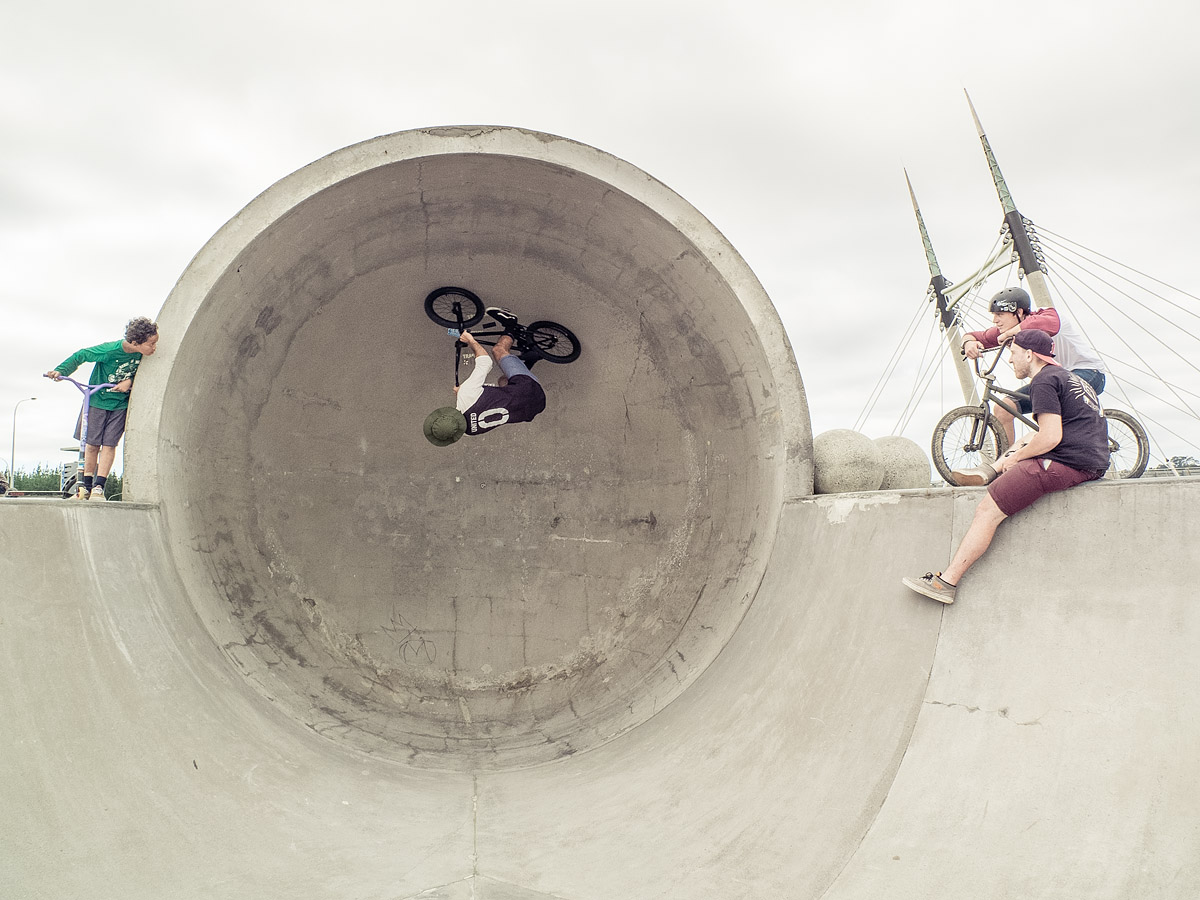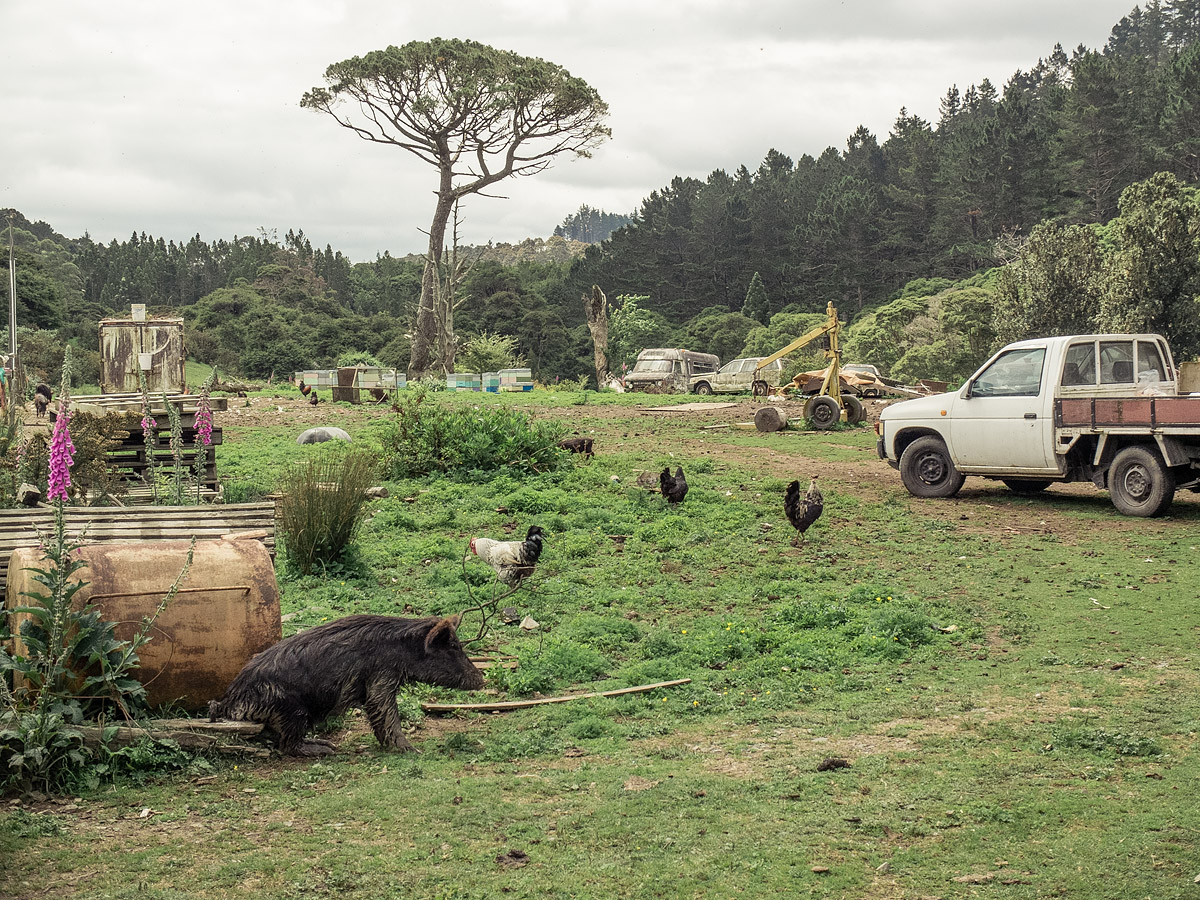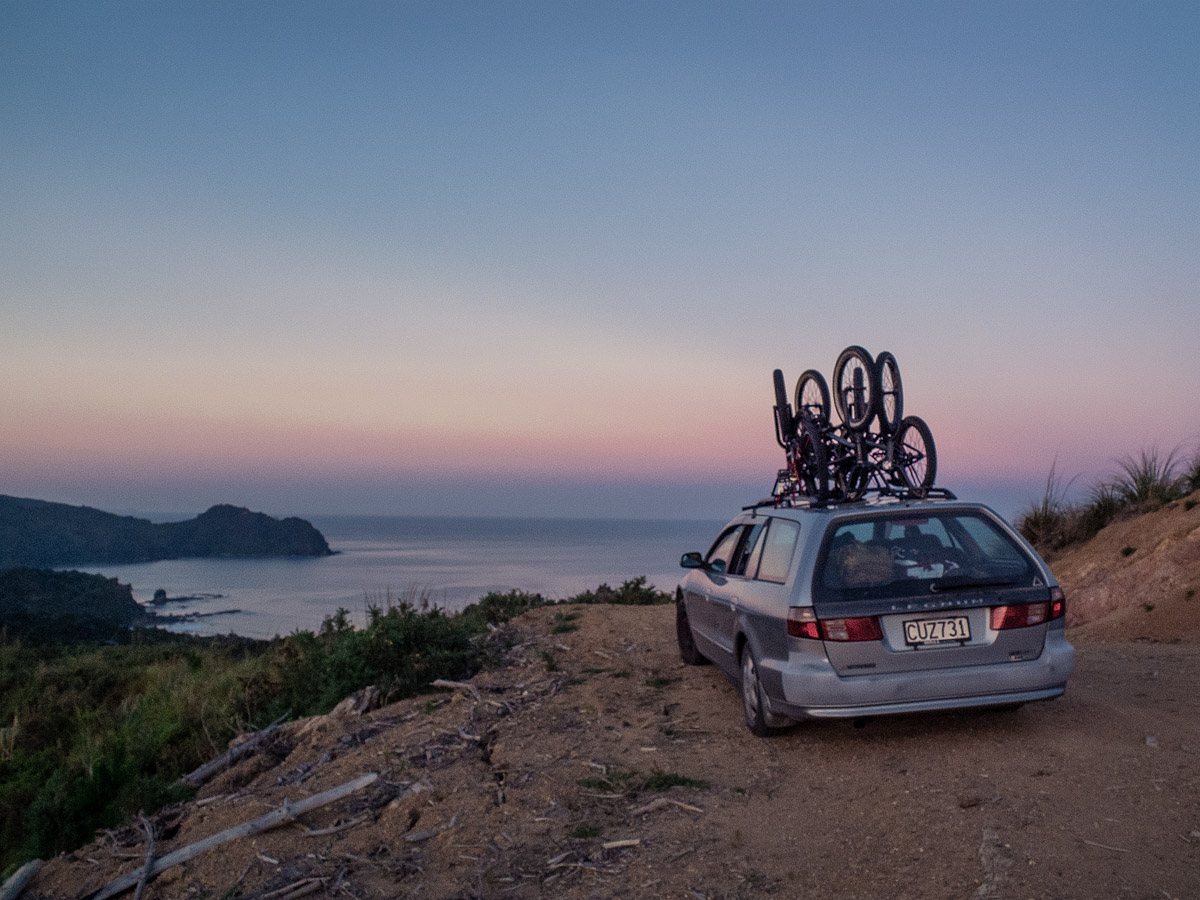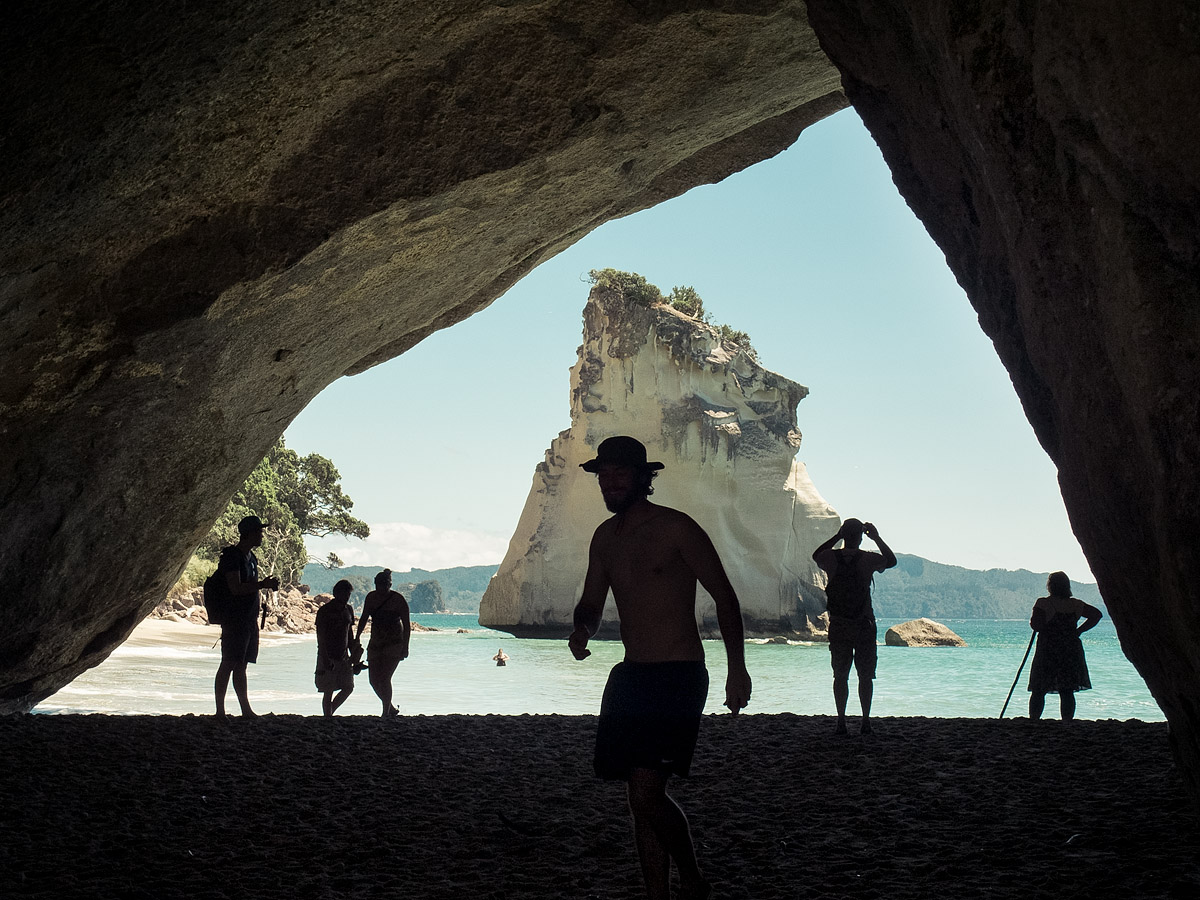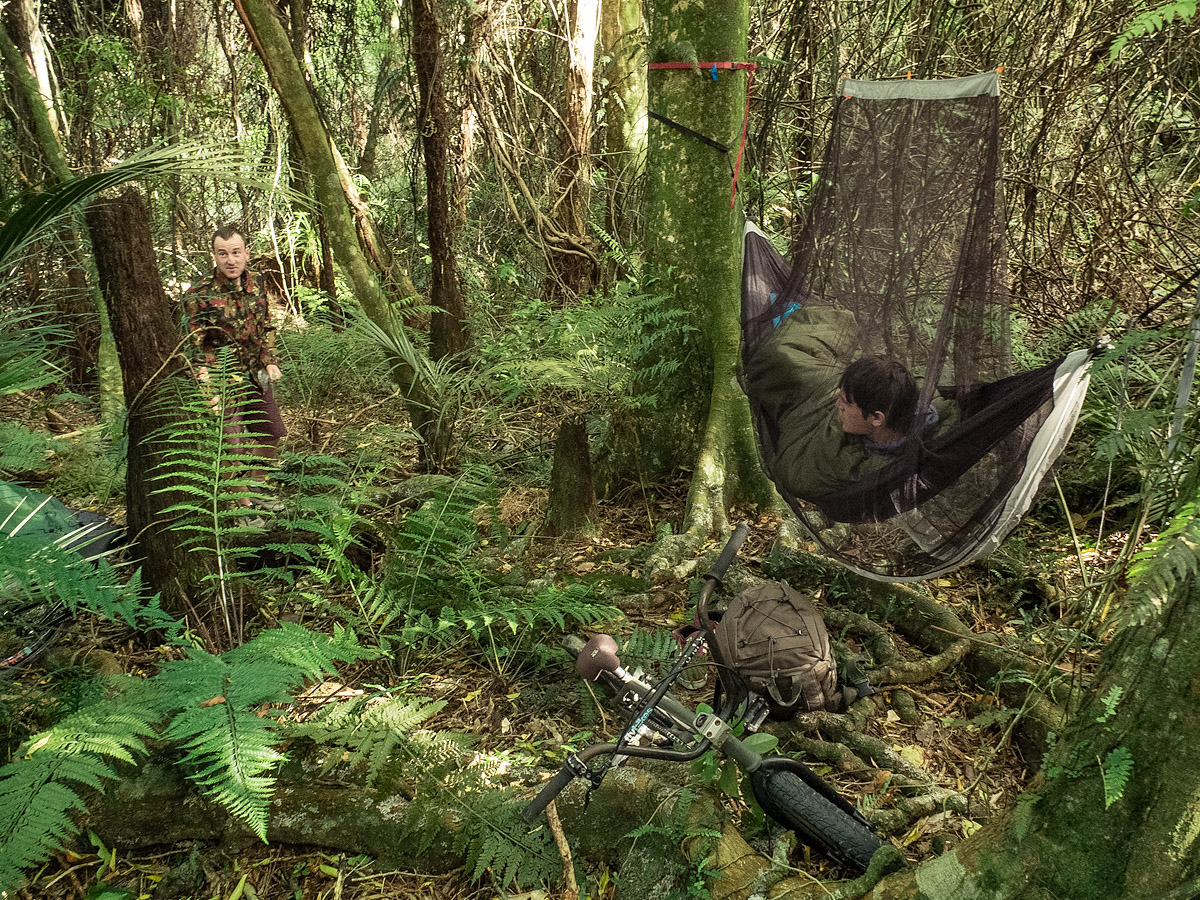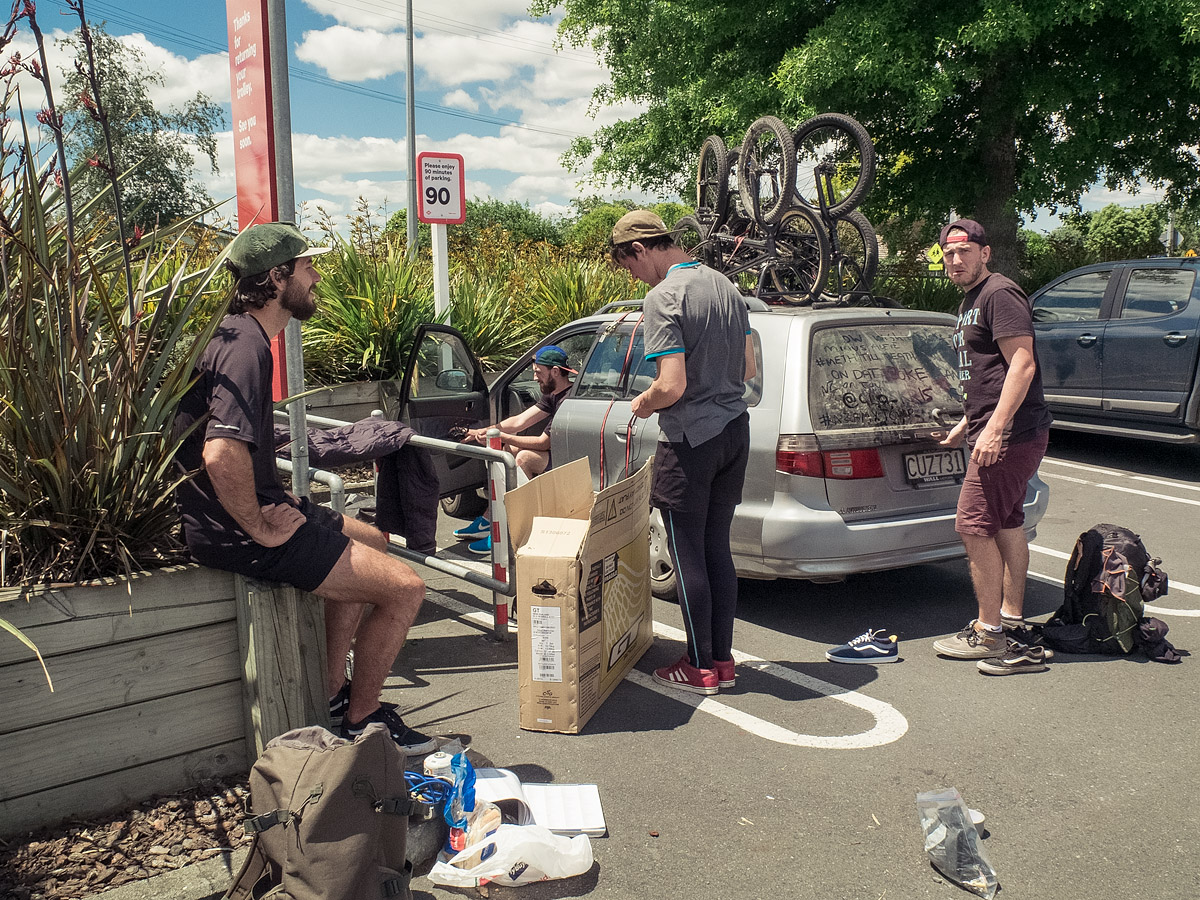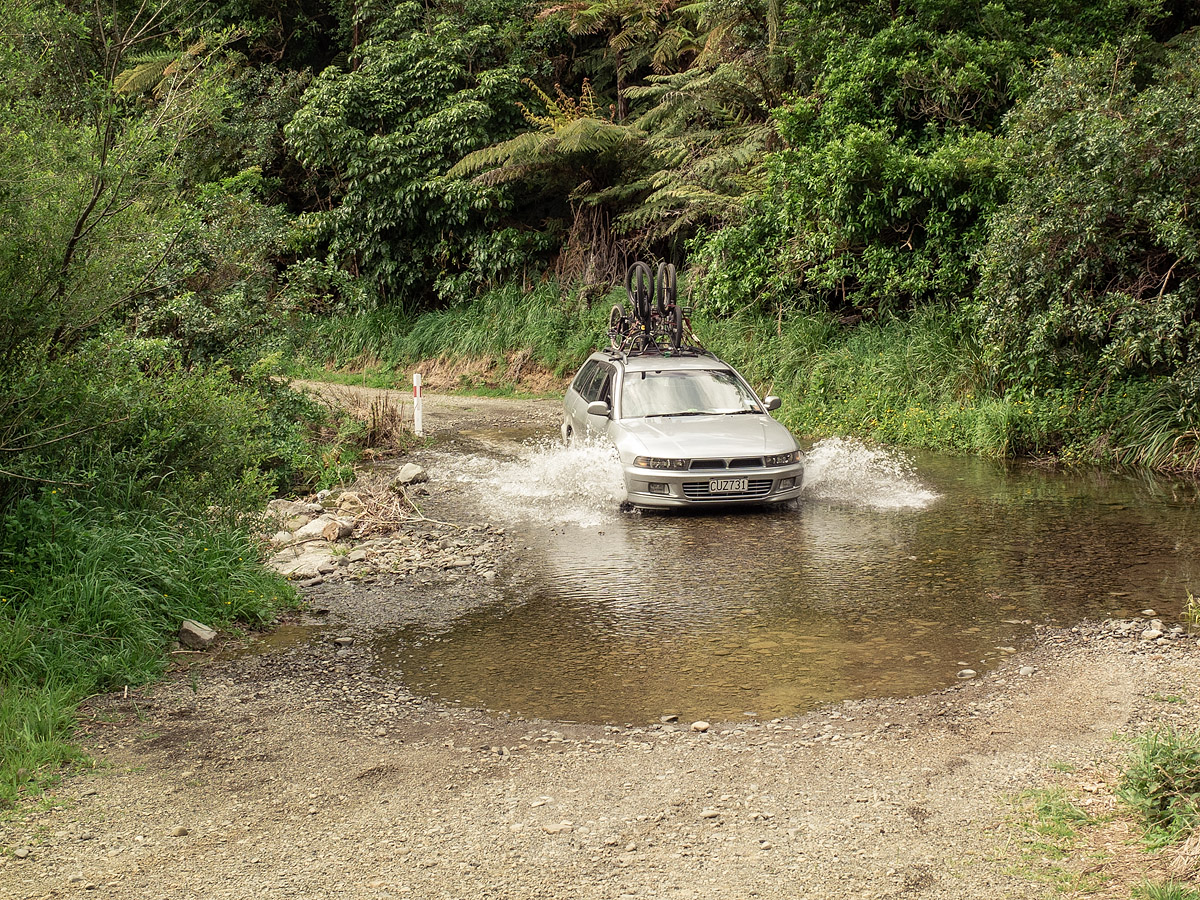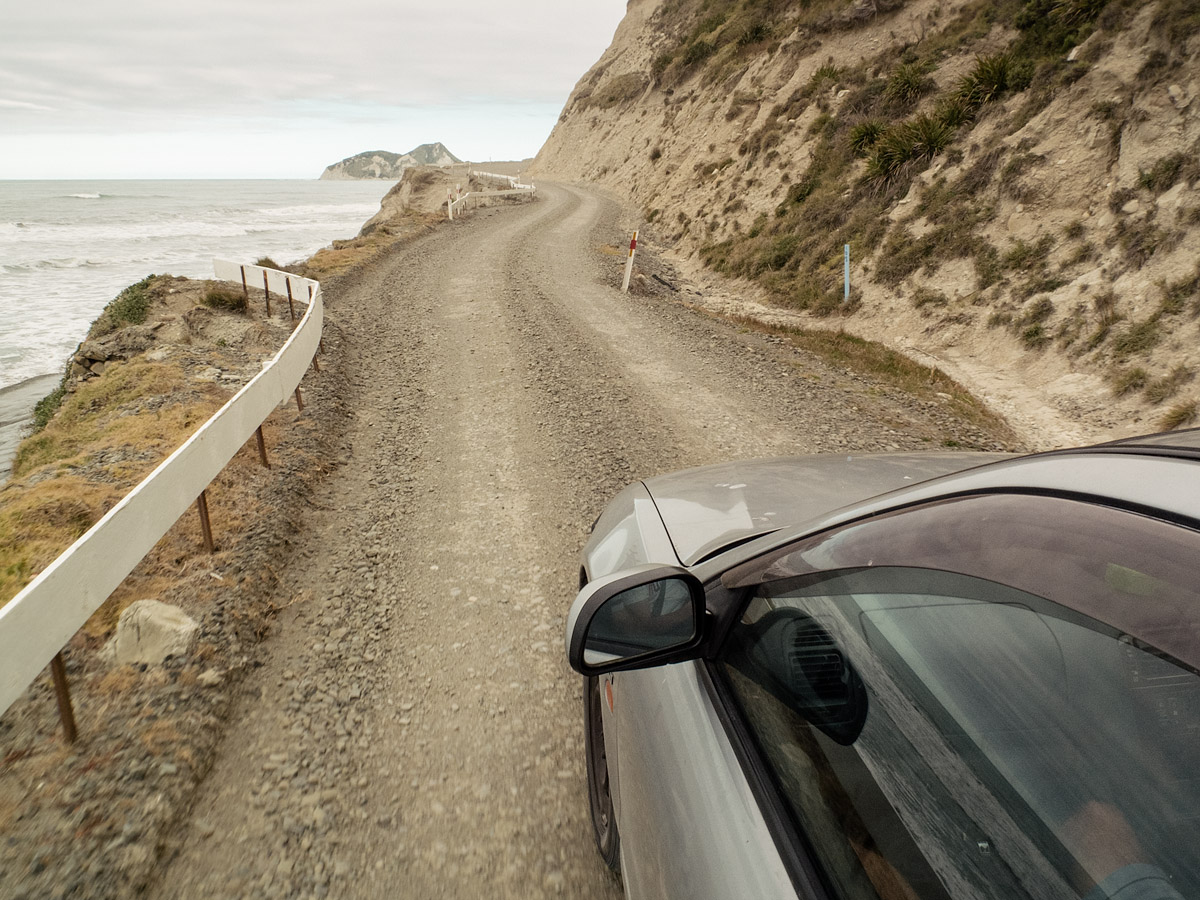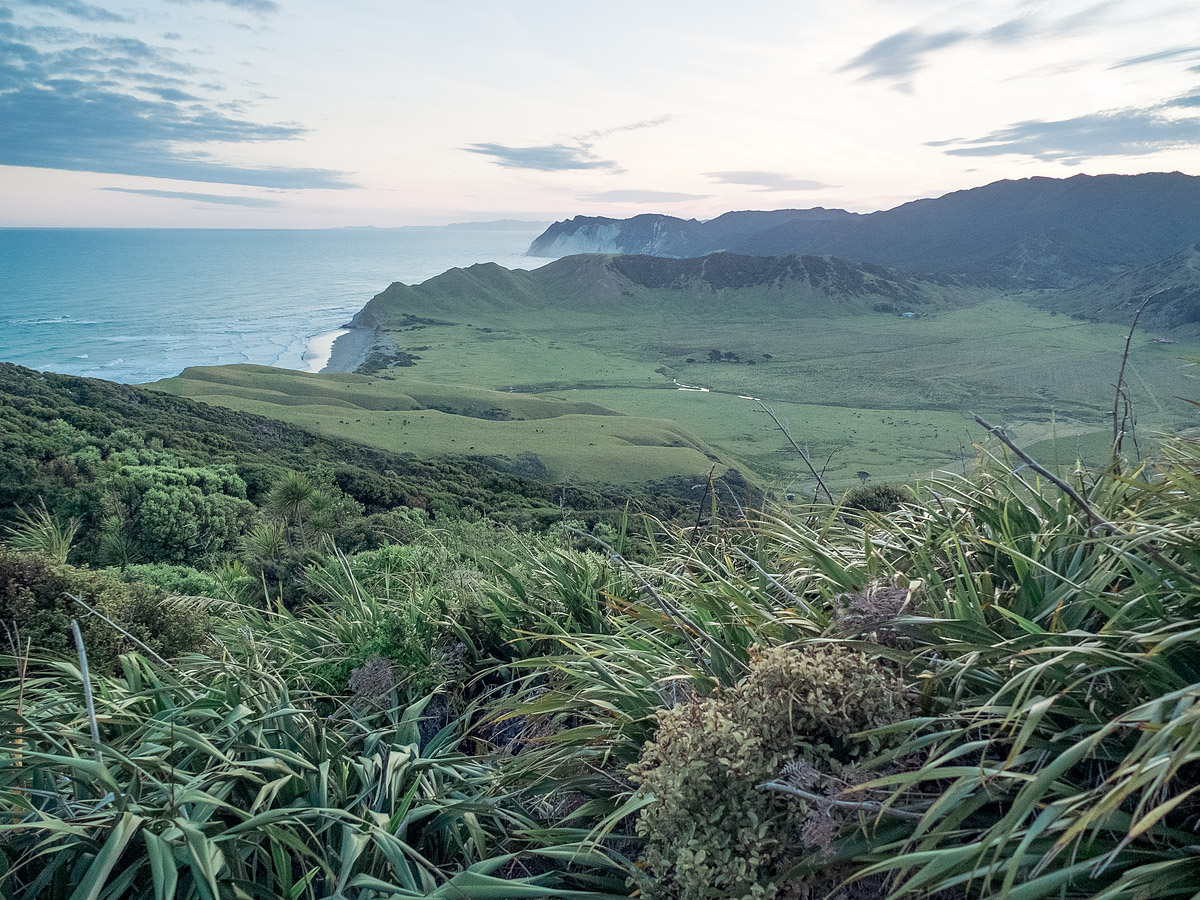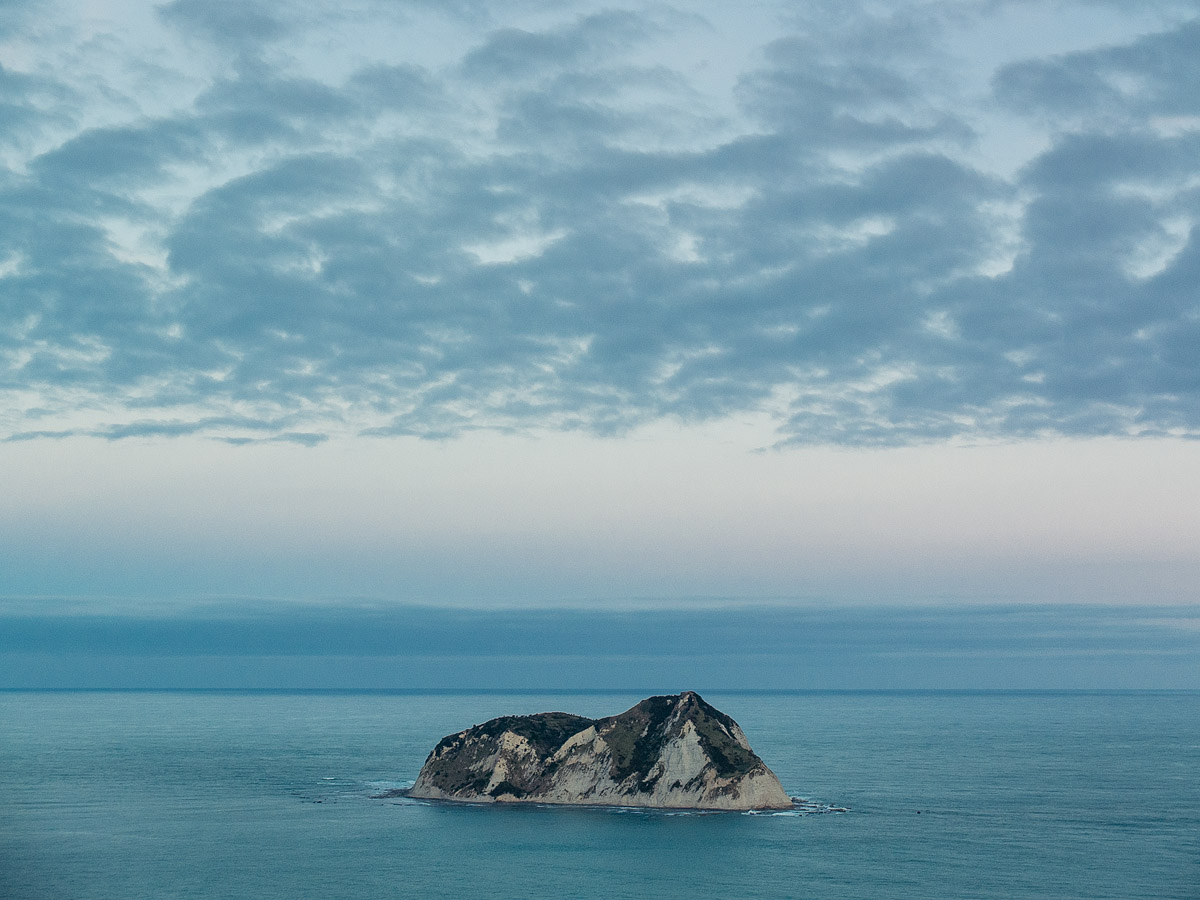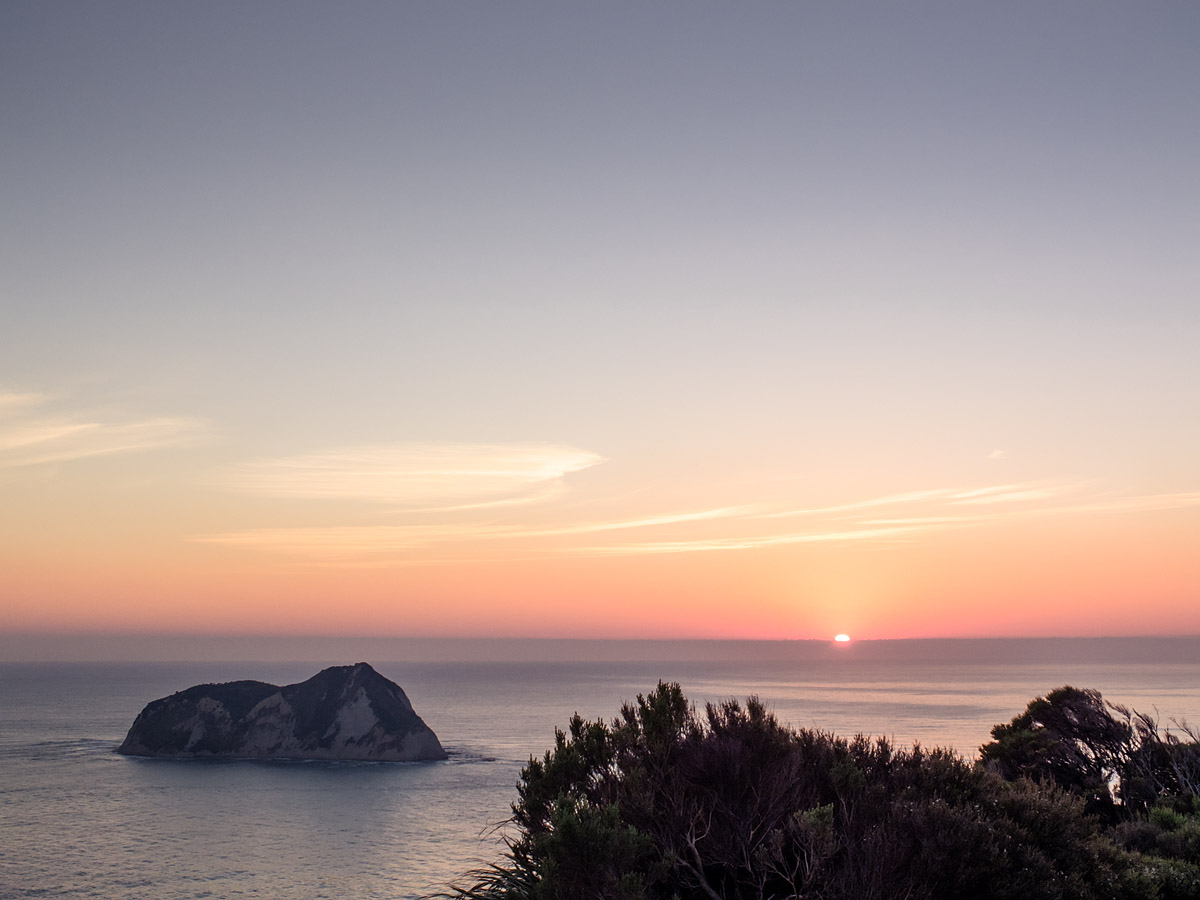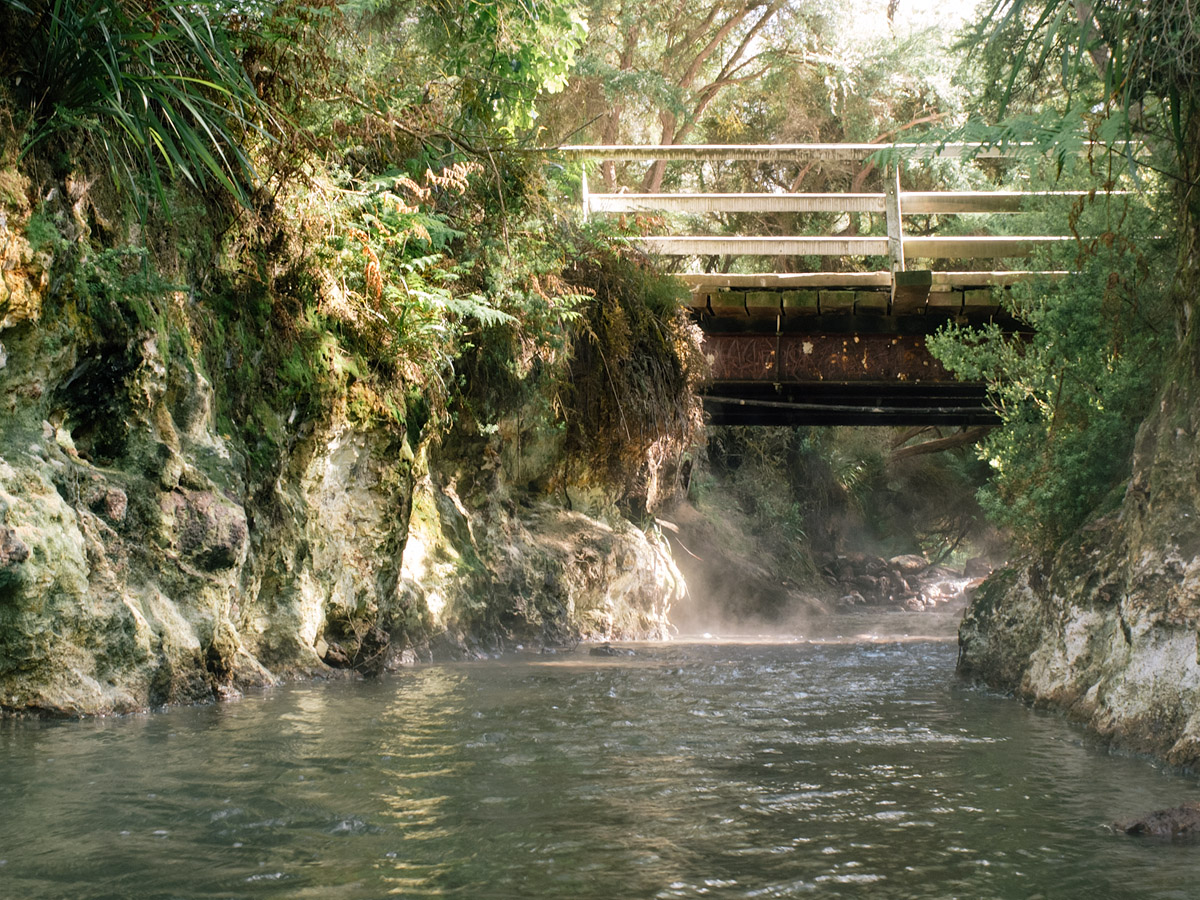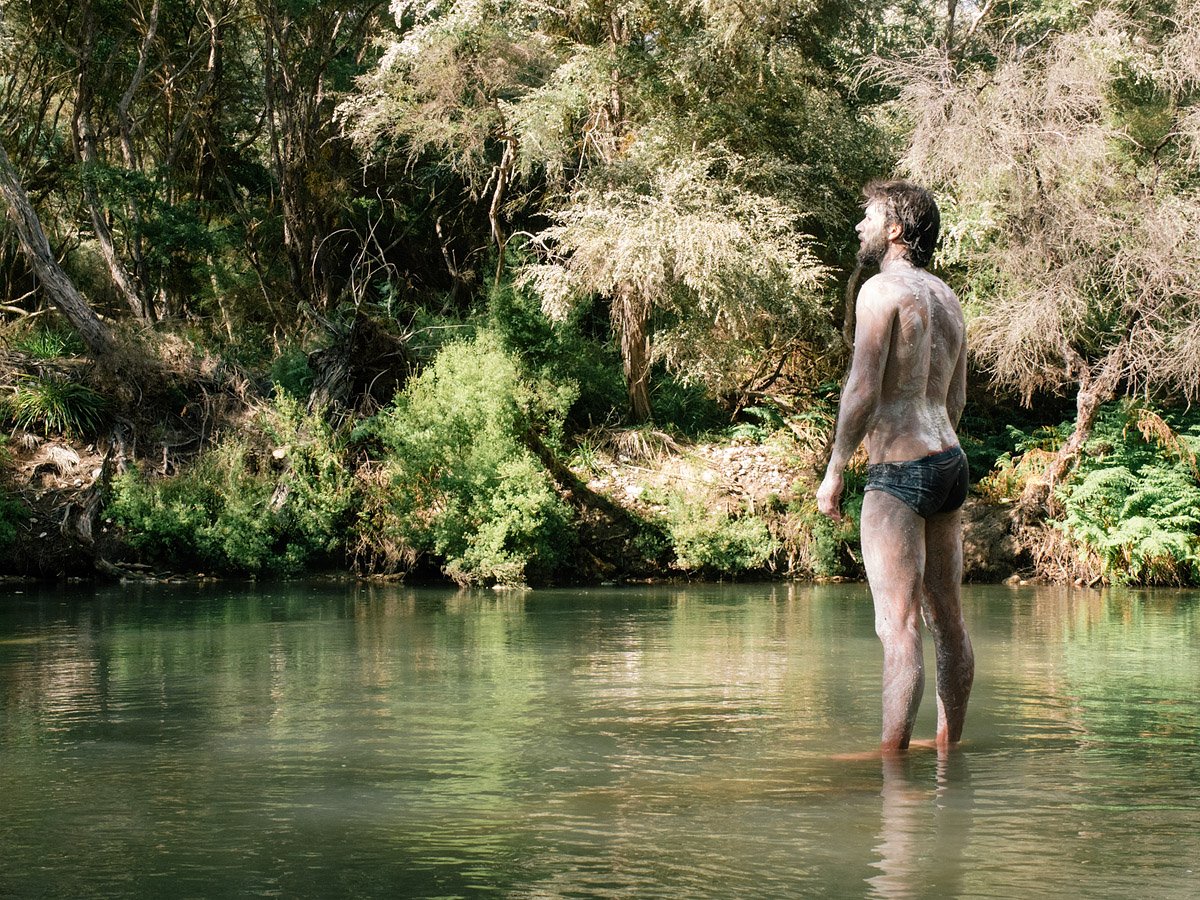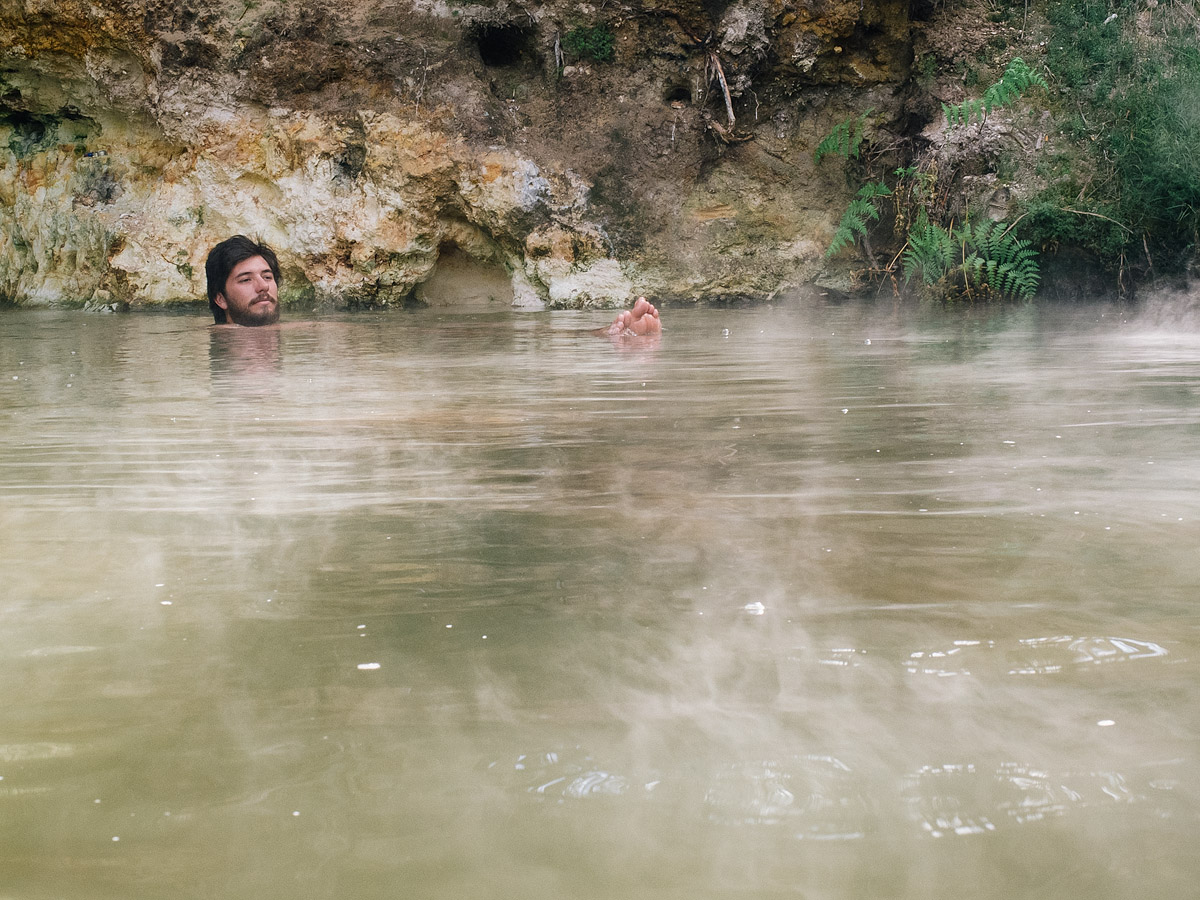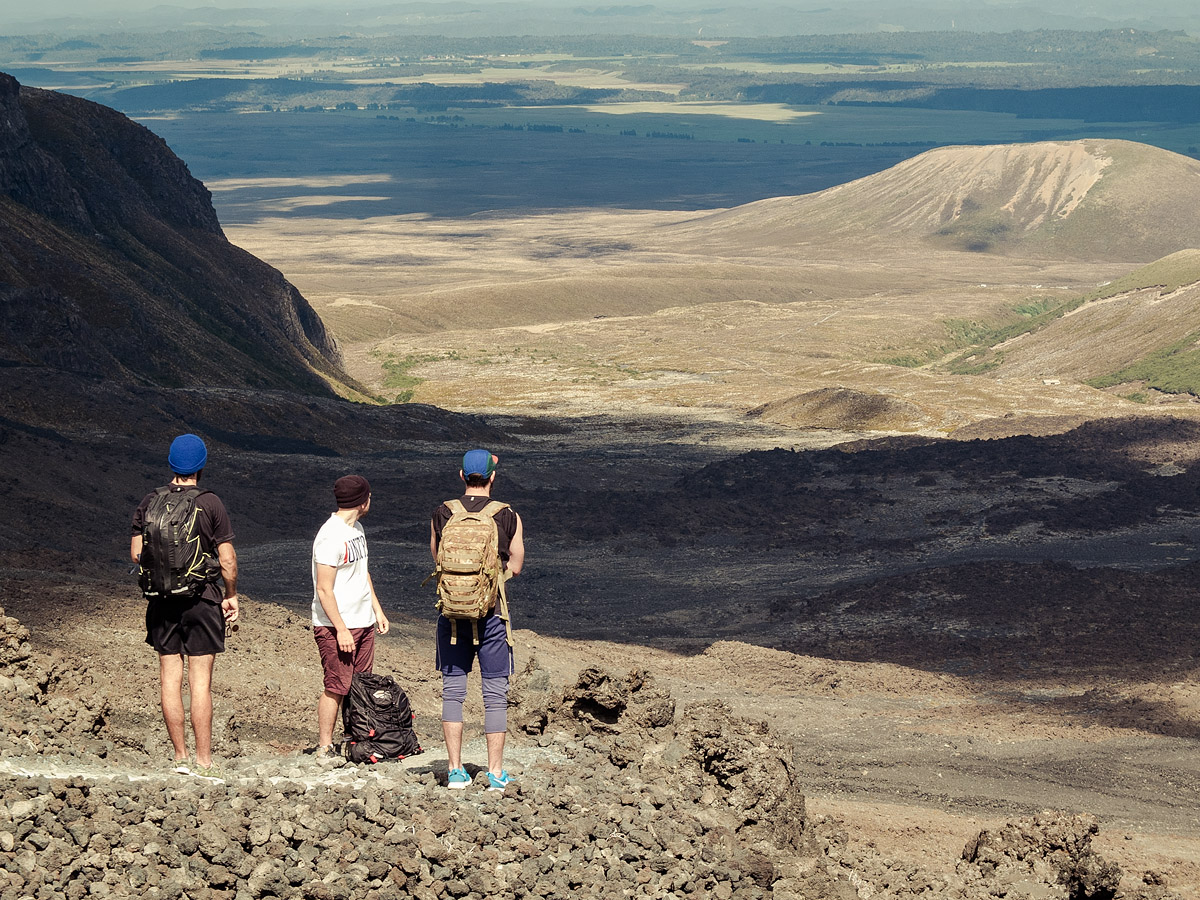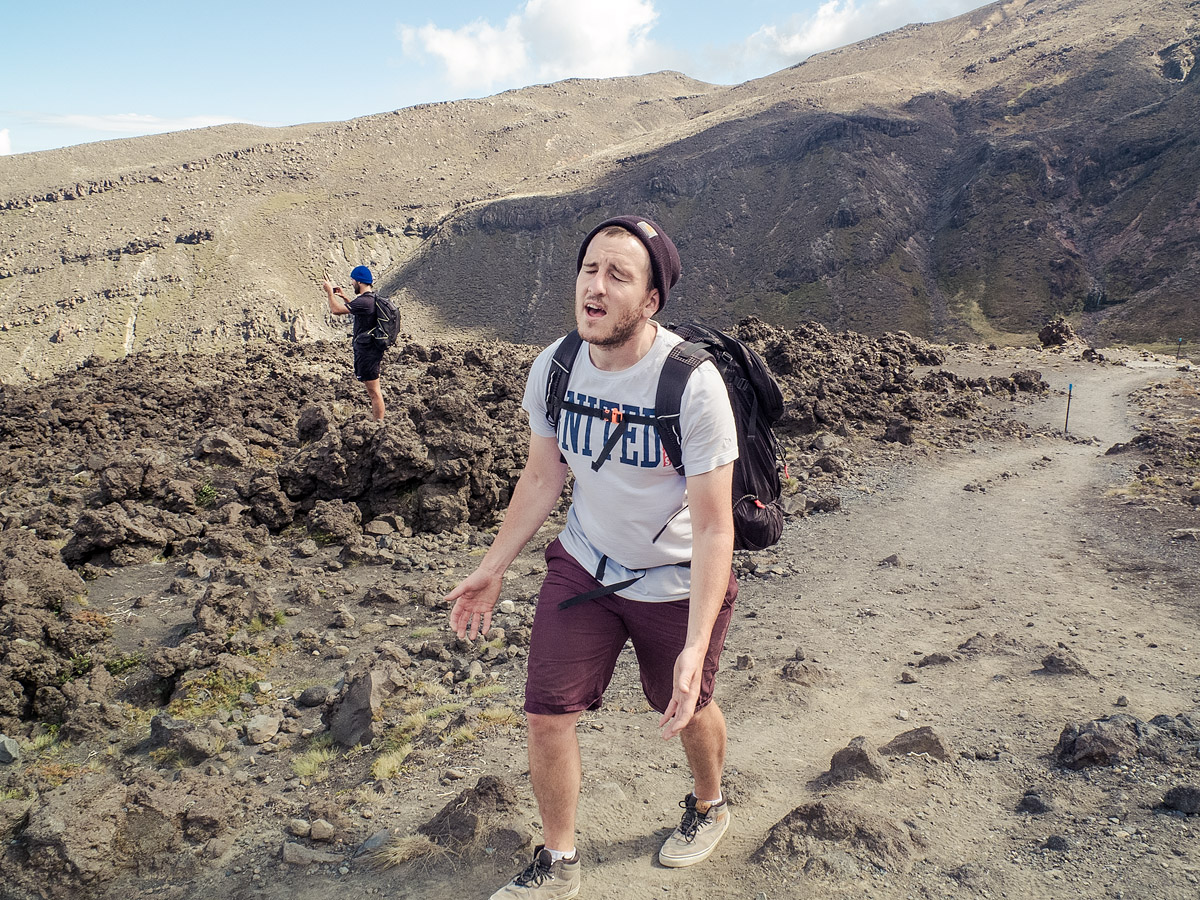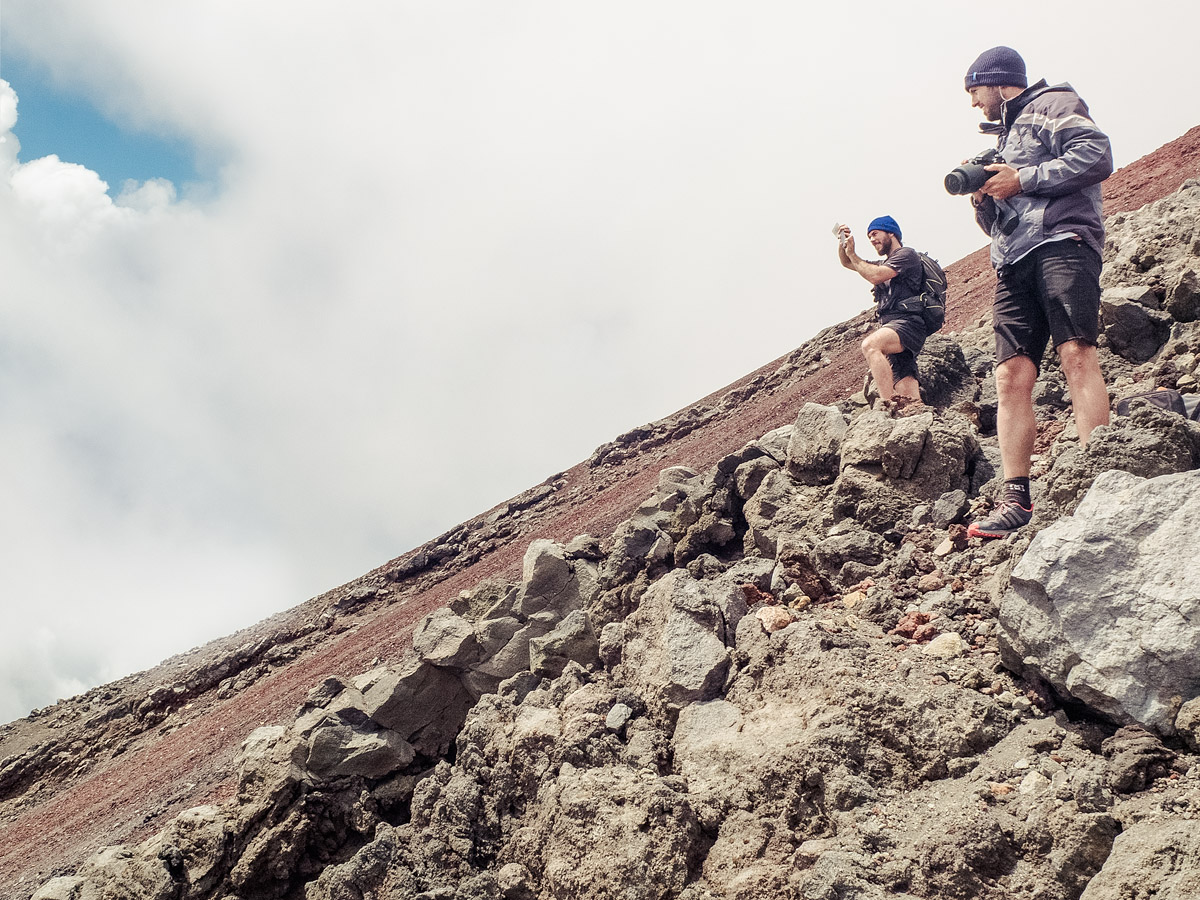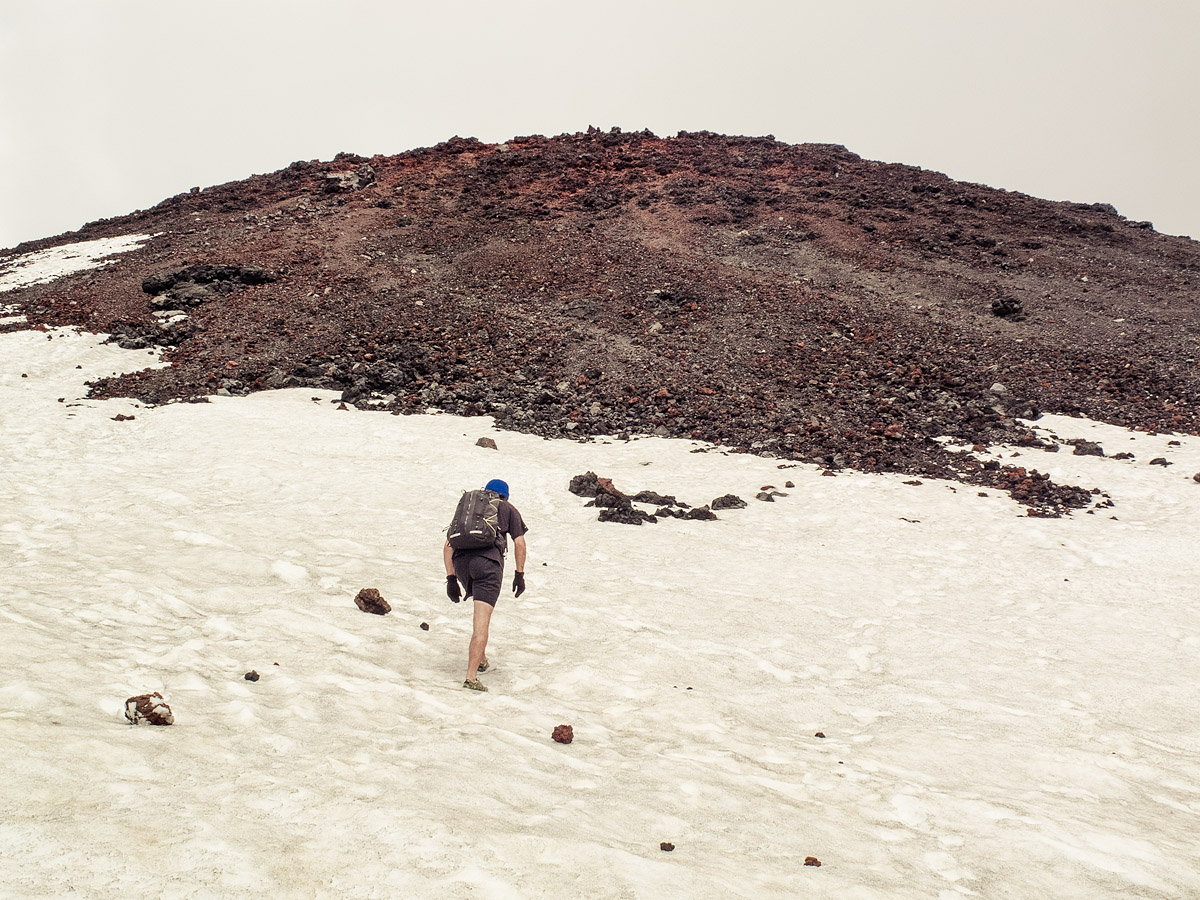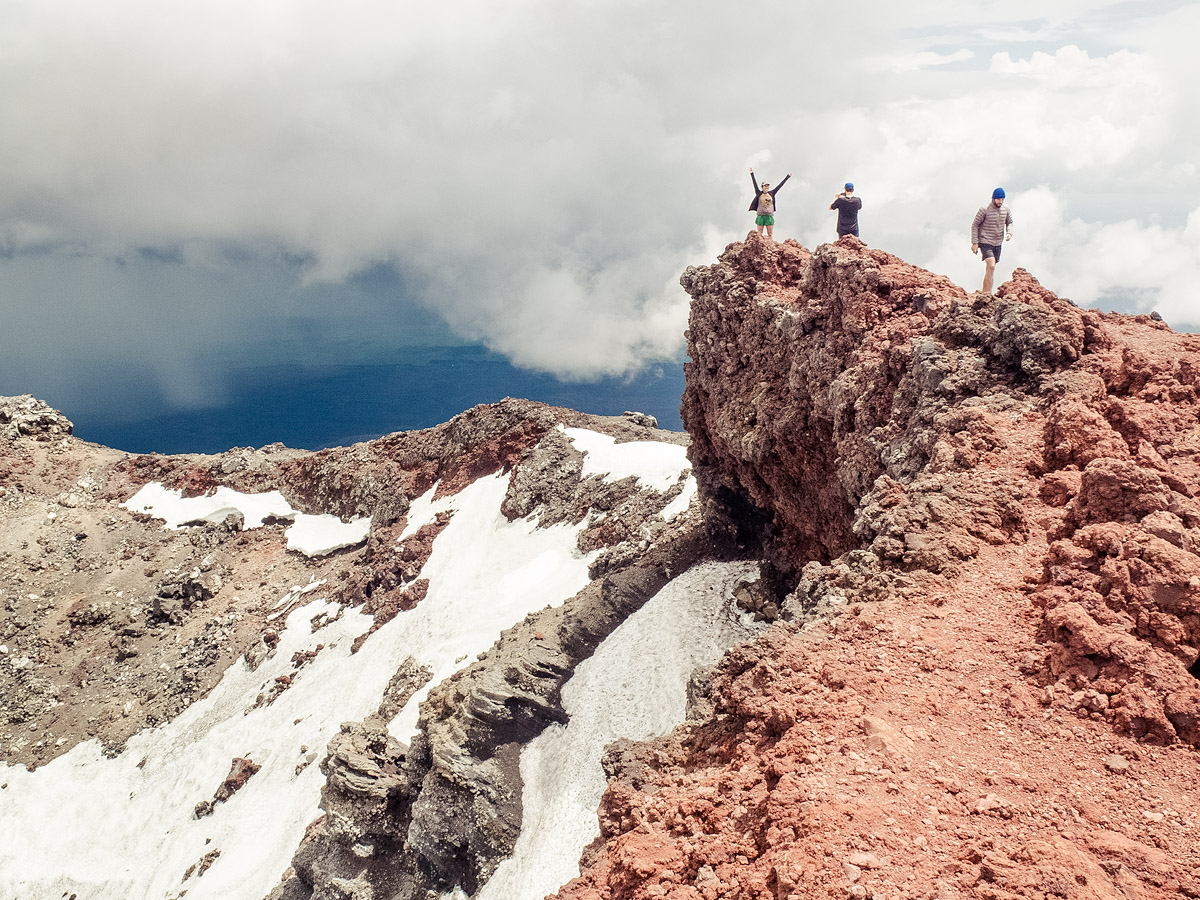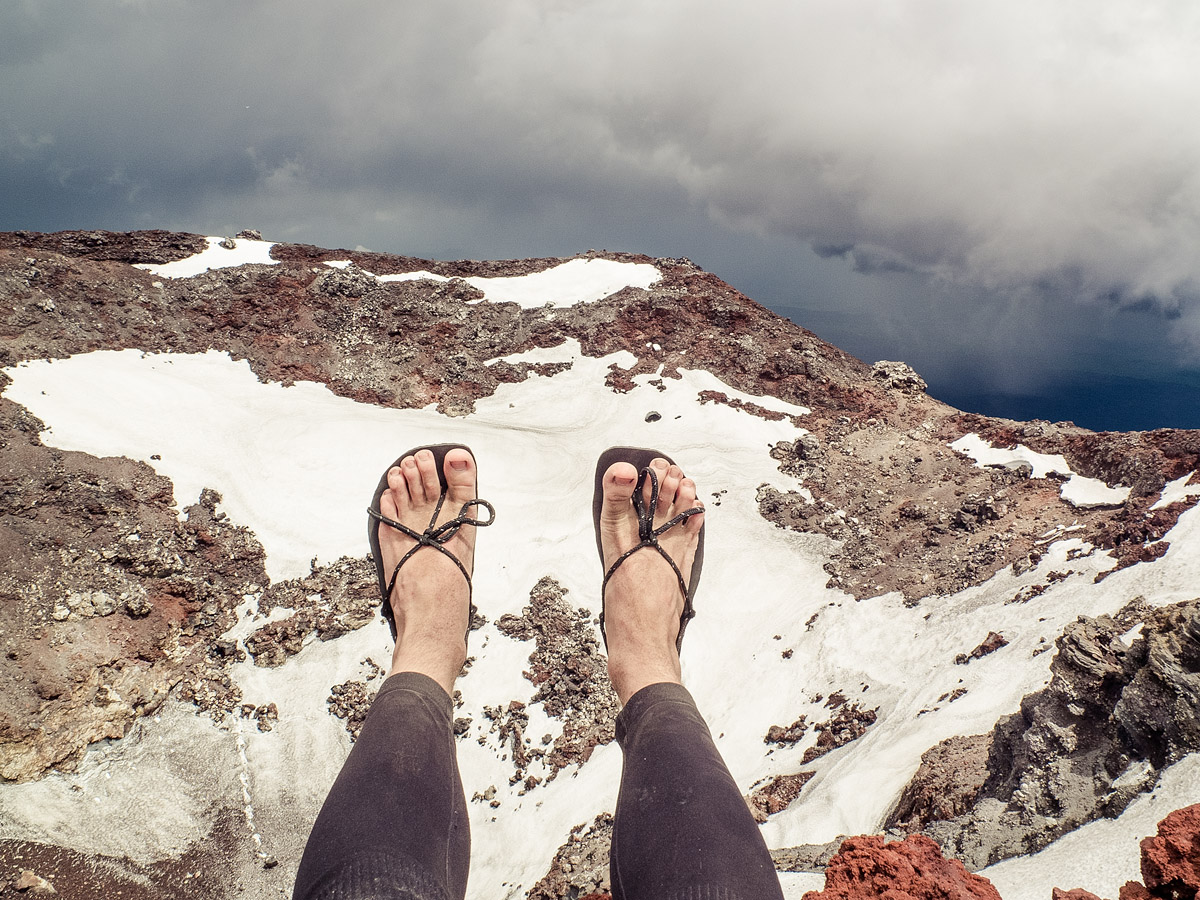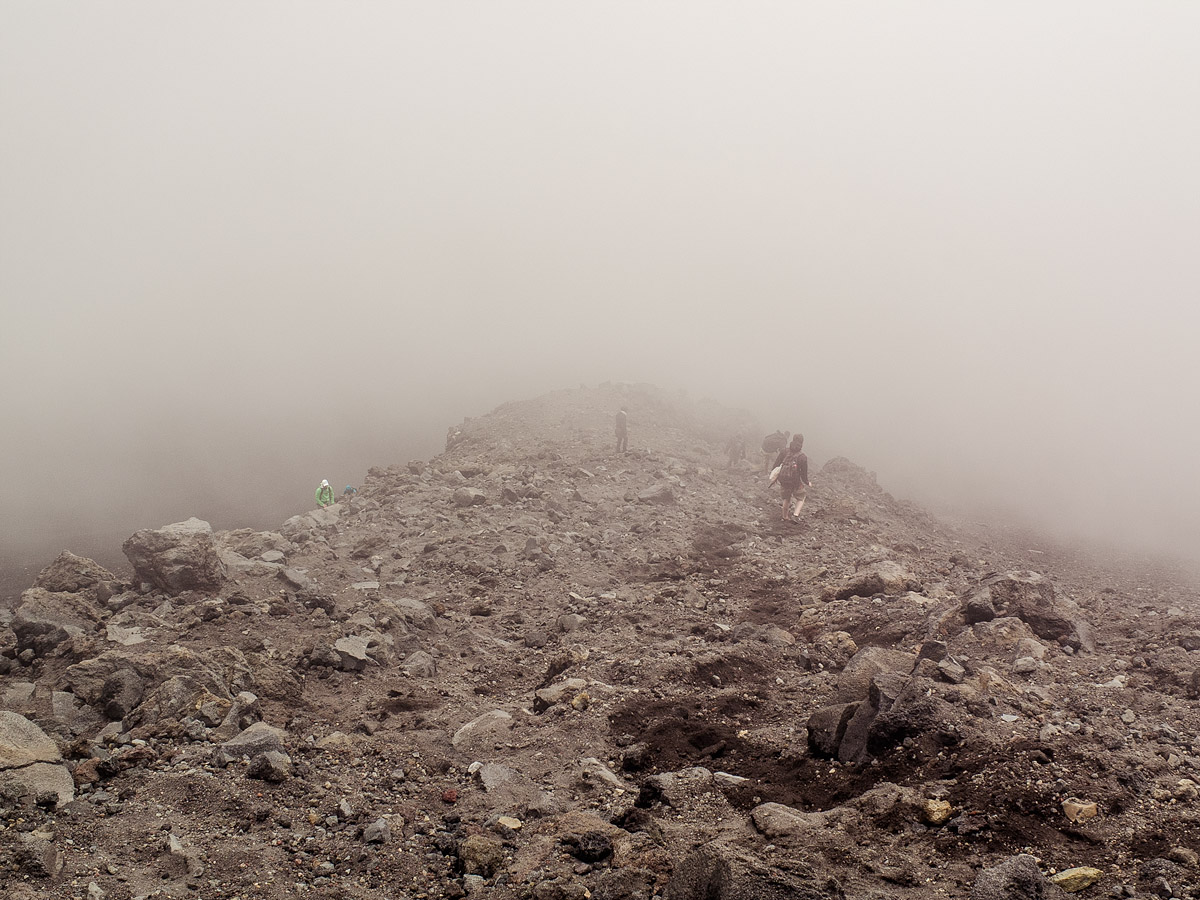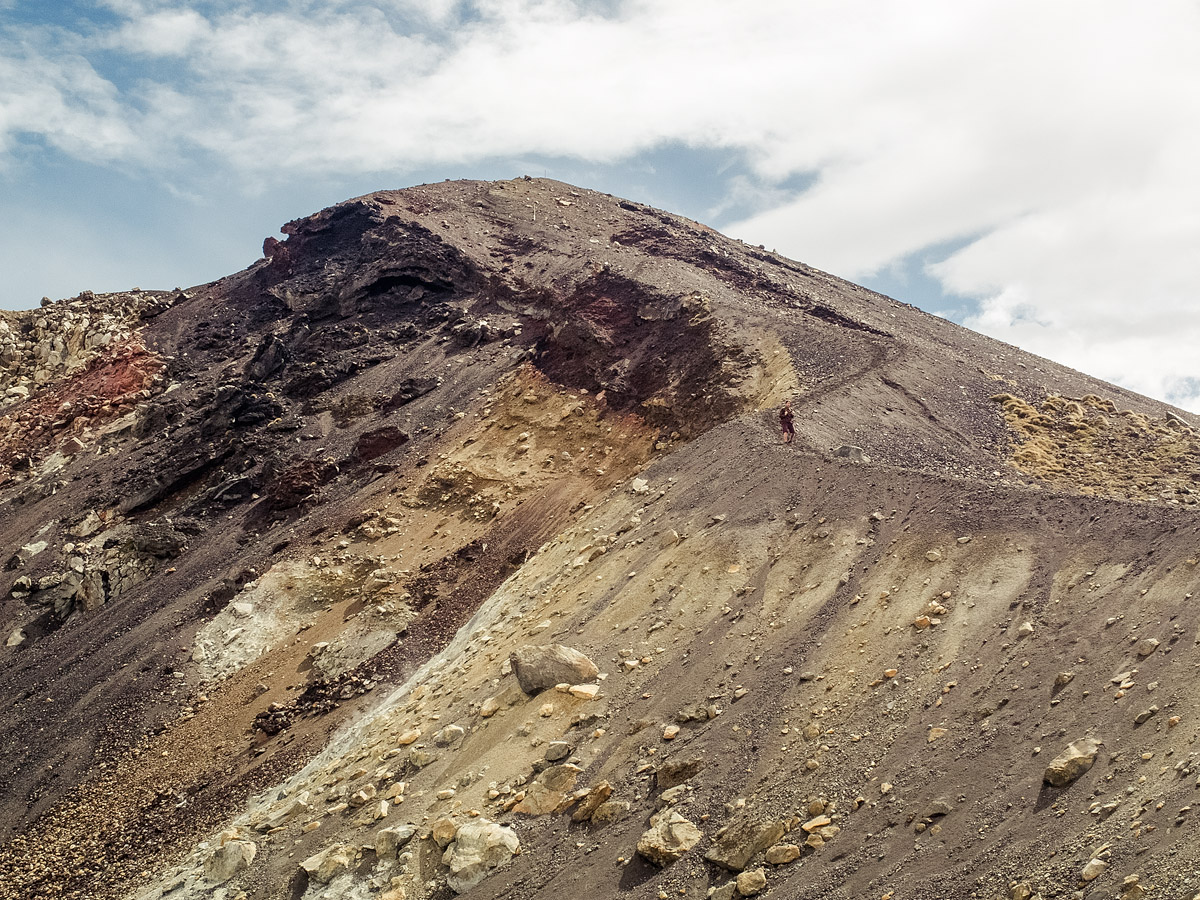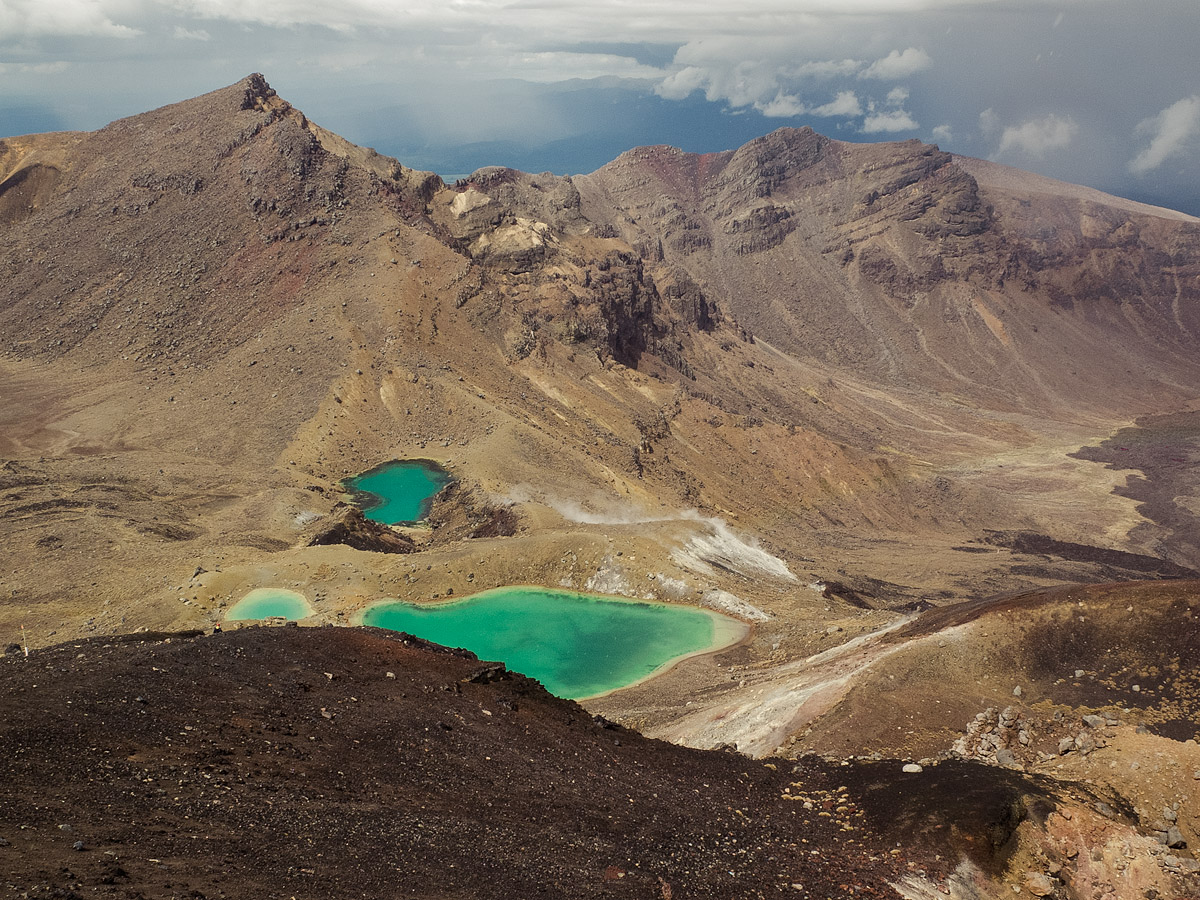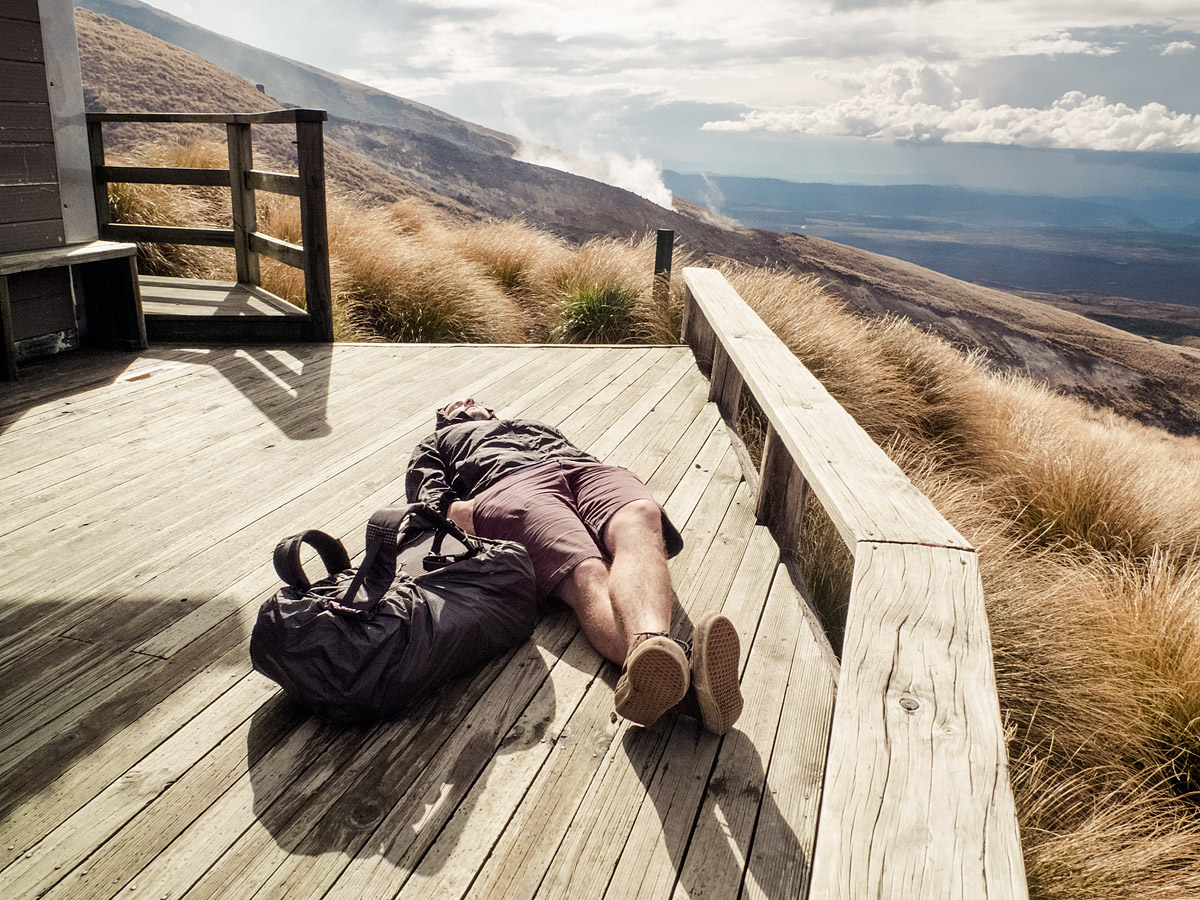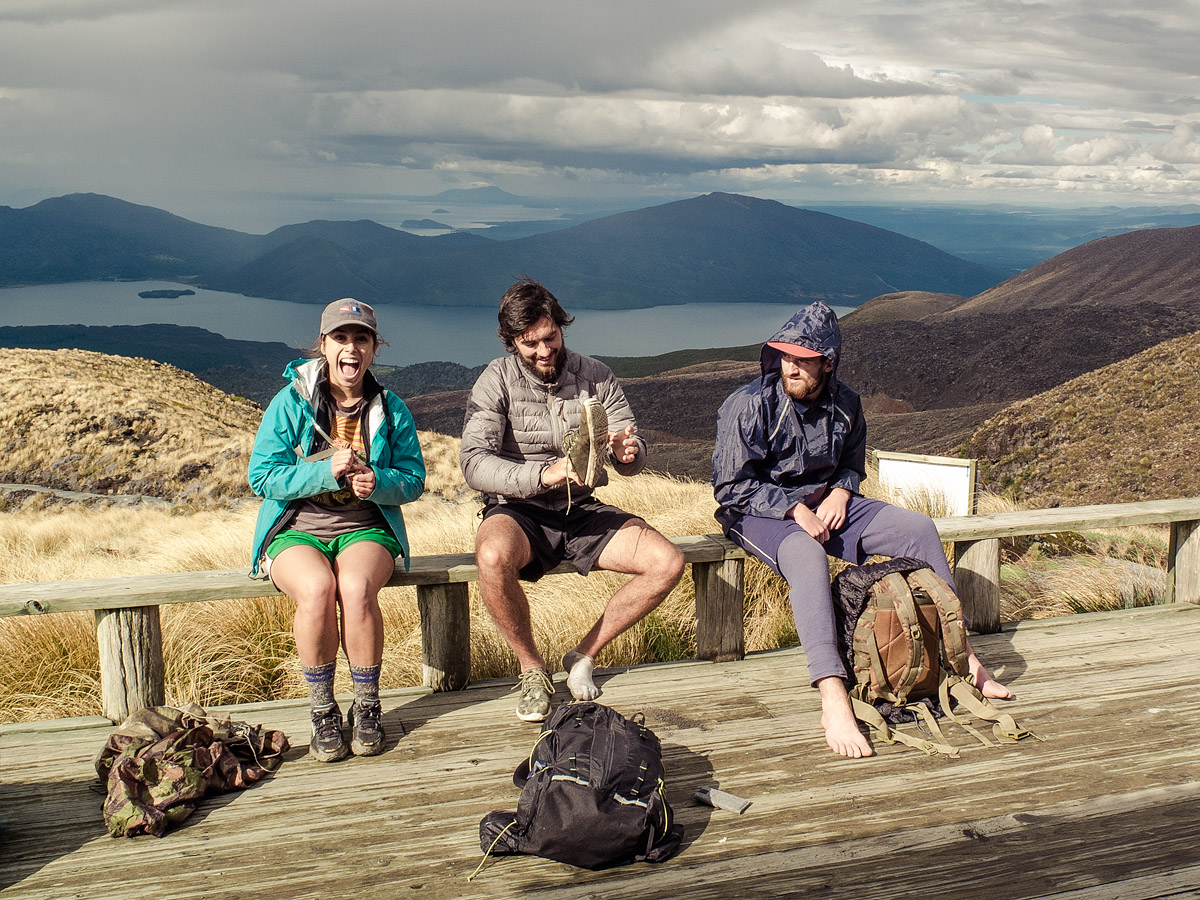Oh I do believe
If you don’t like things you leave
For some place you never gone before
Pa papa papa papa
Pa papa papa papa
Pa papa papa papa
Pa papa papa papa
With two nights back in Auckland we set about the new plan: get a vehicle we could squeeze five people and five bikes into. The owner of the hostel introduced us to local wheeler-dealer Michael. He had three cars to choose from so we bought the one he seemed least keen to get rid of (“aw no, you don’t wanna be a Mitsi’ driver do you?”). We left Auckland behind the wheel of a Legnum (“cheers big ears, you’re now the owner of a car in New Zealand!”) with the advice to “get yourselves down to the South Island” as soon as possible, presumably to be far, far away from him when the wheels fell off the thing.
On day one with the car we saw more than we had in the previous two weeks combined. It felt like, for perhaps the fourth time, that the trip had begun, and, for the first time, as we zig-zagged from coast to coast that our expectations about this country were being met. On bikes we would not have seen these places. They were too far off the direct north-south route, down too many gravel roads and up too many hills. New Zealand is maybe the worst country we could have chosen for our first cycle touring adventure. A trip somewhere familiar made new by the journey would have been better.
The freedom of cycle touring, buying nothing but food, owning nothing you can’t fix yourself, is still appealing. But money can buy freedom just as it can buy another way to tie yourself down. These days I try—as with the car—to spend it more in the former way than the latter.
* * *
Alfie decided to leave the trip at this point, for various reasons.
As the sun set over Raglan Harbour a coach and a flight were conjured from a mobile phone, library wifi and a credit card. A bike box was scavenged the next morning and we dropped him off in the afternoon. Then a 9am flight, layed over in Sydney, arriving in Heathrow 30 hours later and 13 hours behind. Departures are always mottled with an irrelevancy of details: Tickets and timings, the ephemera of leaving, memorised for a moment in moments unremembered.
I don’t know how Alfie felt in those hours in between, but I hope sincerely that whatever he left in the UK means that much more for having gone back to it, as much as the freedom to exist anywhere means to me.
—
After dropping Alfie off we headed east, as far east as it’s possible to go in the world without leaving a mainland. The last 25km of the East Cape Road is a plateau of gravel between cliffs and the Pacific, ending at the foot of a long set of steps up to a lighthouse, amongst a vast allotment of sheep pasture.
We climbed to the foot of the lighthouse and enjoyed the insignificance of being—at various points—the mostly easterly person wearing a hat, eating two-minute noodles, sleeping in a hammock, and so on.
I woke up just as it was beginning to get light. Wrapped in my sleeping bag I sat at the foot of the lighthouse and waited to be the first mainland person to see the sun rise. I imagined the International Date Line beyond the glimmering edge of the visible world. I wondered who, over that crease in time, across the flatness of the ocean, back in the previous day, was chasing the sun down with their gaze while I saw it up. Then I went back to sleep.
* * *
Further through our North Island journey we were recommended a spot called Hot and Cold in Wai-o-Tapu (Māori for “sacred waters”). It was the confluence of two streams, one cold and one naturally heated by geothermal activity. We would soak in the steaming water for as long as we could stand and then wade a few metres to plunge in the cold stream. Somewhere in between there was a mixer tap type-effect. The banks were cut from a clay which, mushed up into a paste and rubbed onto the skin, made a mask. Maybe it was from too many mornings washing in rivers or the sea; maybe because it was an unlikely place to find on the side of the road in a forest, but it was just about the cleanest I’d ever felt.
—
Doing this 19.4km, one day walk through a volcanic landscape is one of the highlights of my life thus far.
On our climb to the first crater we met Megan, a Californian studying in Australia, and Wayne, a South African who was not only cycle touring New Zealand but doing so while towing his BMX on a trailer. It was by far the most unlikely place I’ve met another rider, let alone one with whom we shared so many mutual friends.
Megan persuaded us (“you’re only here once”) that we should do the off-track side trip up Mt. Ngauruhoe, the volcanic peak that you can see in the first photo (also known to Lord of the Rings fans as Mt. Doom). Along with Wayne and a couple of German guys we scrambled and climbed for two solid hours to get to the top.
Fortunately the fast-changing weather held off long enough for a spectacular view from the rim. From clouds at our altitude lightning struck at the plain below. Dislodged rocks took an agonisingly long time to fall to the crater bottom. I ate a tuna sandwich. Sulphurous steam rose from volcanic vents on an adjacent ridge. We marveled at the effect of altitude on a sealed crisp packet. All too soon clouds rose forming up the face we’d just climbed and began to close on us.
At the beginning of the day I didn’t anticipate the volcano side trip. So I found myself up there in the least appropriate of the two pairs of inappropriate shoes that I had in the car. Going up was fine, but the descent through mist, hail and igneous gravel was… uncomfortable.
From the foot of Mt. Ngauruhoe there was still 12km to go. In total the walk took us 10 hours with over 1200m of ascent. Megan stuck with us till the end—her stoicism neutered our moaning somewhat—and the lift she gave us back to our car was very much appreciated. In my experience you meet the best people while doing the best things. That held true for Tongariro as much as anywhere.
—
